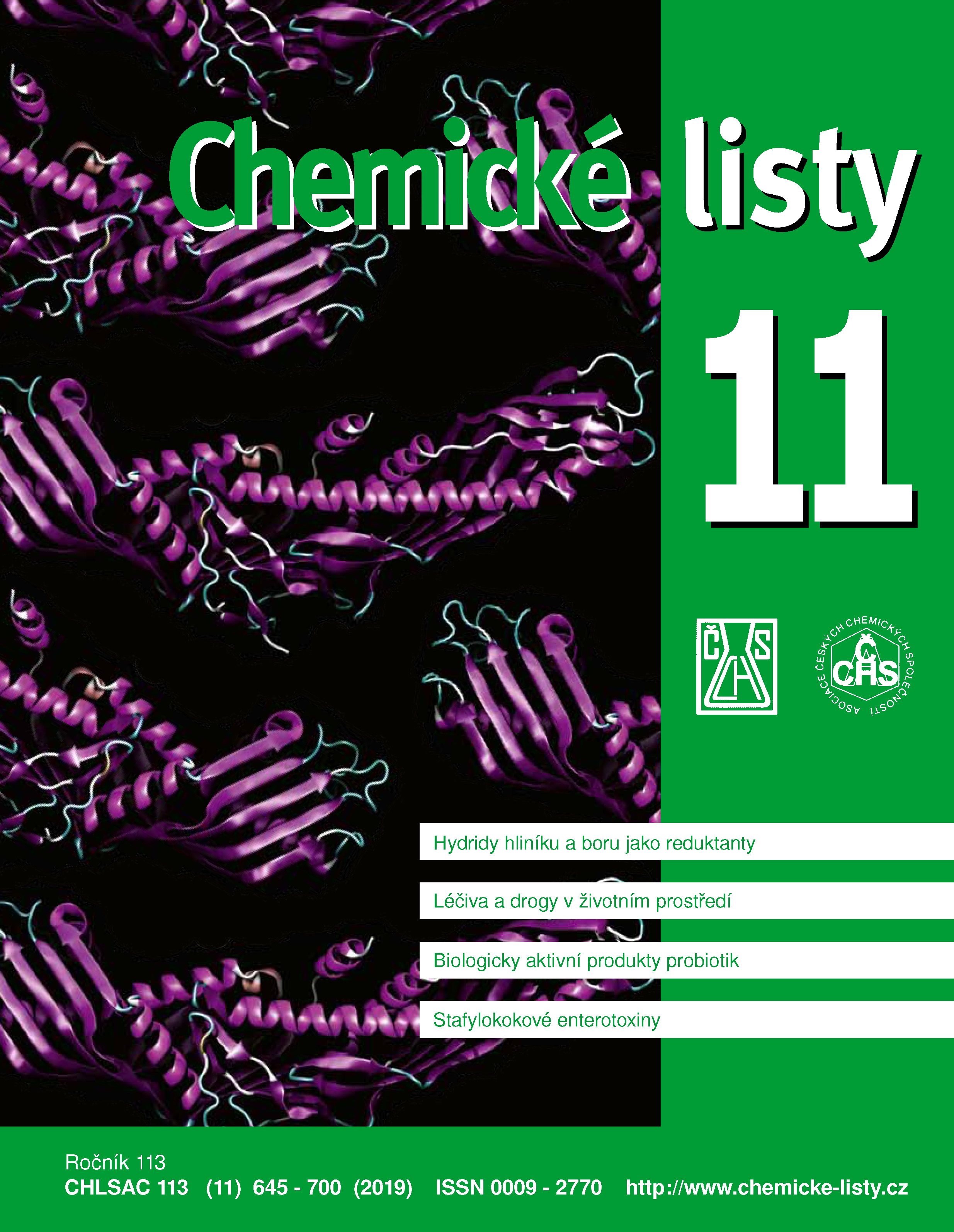Reduction of Organic Substances Using Hydrides Based on Boron and Aluminum
Keywords:
reduction, reducing agent, hydrides, sodium borohydride, lithium tetrahydridoaluminate, diisobutylaluminium hydrideAbstract
Reduction plays a very important role in organic synthesis. Hydrides, such as sodium borohydride, lithium tetrahydridoaluminate, diisobutylaluminum hydride, and lithium triethylborohydride (super hydride), are commonly used reducing agents in chemical syntheses. The same substance can be reduced by various reducing agents. The choice of a particular reagent depends on the structure and stability of the original substrate and also on the isolation conditions of obtained product. The aim of this review article is to show basic properties of the most commonly used hydrides based on boron and aluminum.





